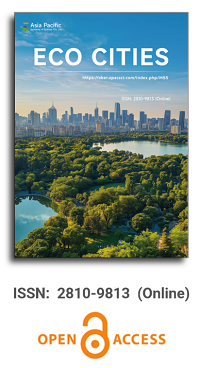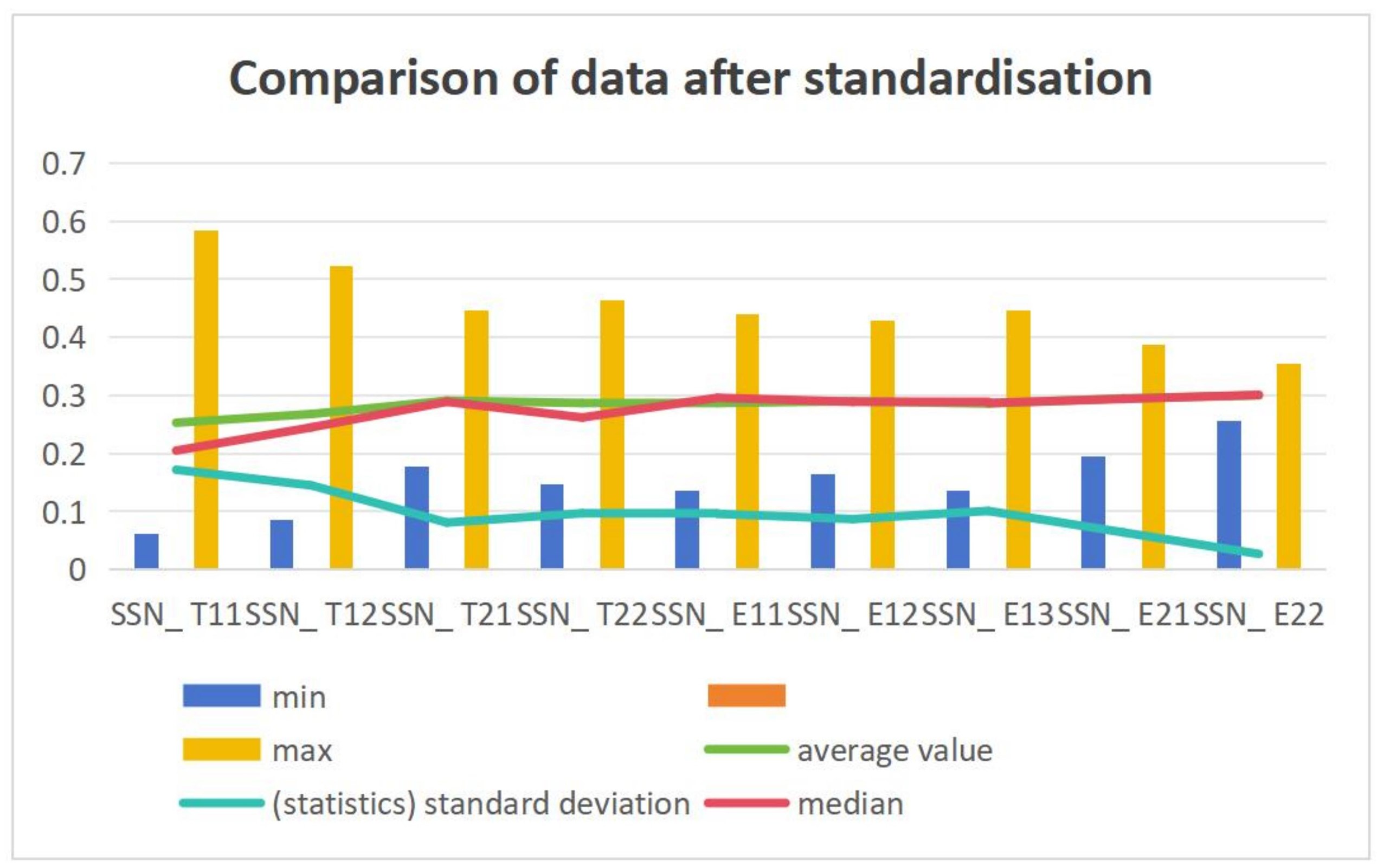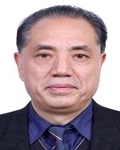


Measuring the positive effects of the pandemic disease in the environmental planning of healthy cities
Vol 4, Issue 1, 2023
Download PDF
Abstract
The city as a living system and a dynamic structure throughout history, from birth to the present day, has shown a flexible attitude to the challenges ahead and has been constantly trying to overcome the challenges and reproduce its elements for the opportunity to become efficient and usable in the future. In the face of the corona pandemic challenge, the city has acted in the same way, shown reciprocal behavior, and tried to overcome this crisis effectively. Therefore, city planners and managers must approach the healthy city and its elements with a different approach and perspective. Apart from the destructive effects it has had on the human body and soul, the corona pandemic has also changed the quality of life in cities and their environments so much that new living patterns have been formed and some of the past structures have been discarded. For this purpose, after studying the literature review and the international experiences, the dimensions, factors, and effective indicators of the corona pandemic have been identified. The present study is a descriptive-analytical type, and the desired findings have been explained through a questionnaire using quantitative and qualitative methods and confirmatory factor analysis tools. During the COVID-19 pandemic, the concept of healthy cities has been compromised. It has unveiled the need to give more prominence to caring tasks while addressing intersectional social inequities and environmental injustices. The results of the analysis indicate that 14 indicators including lifestyle changes and health protocols, increase in virtual socialization, reduction of inequality among different groups of people in access to the internet, promotion, and expansion of digital tourism (virtual trips), starting development of apps and start-ups, increasing small-scale commercial markets, upgrading medical equipment, increasing countries interaction in the field of health, the importance of planting trees, using public transportation, increasing public transportation capacity, designing more open and green spaces in the city, more attention to deprived areas and slums and redesign of public spaces based on the prevailing conditions will provide positive effects during the pandemic of Tehran. Therefore, in order to improve and enhance the quality of life in healthy cities, especially during pandemics, suggestions have been made.
Keywords
References
- Bemanian MR, Rezaei Rad H. Assessing factor analyst and Delphi models by use of GIS in recognizing deterioration in urban fabric (case study of Khaksefid in 4th zone of Tehran) (Persian). Hoviatshahr 2012; 6(11): 5–16.
- Sharifi A, Khavarian-Garmsir AR. The COVID-19 pandemic: Impacts on cities and major lessons for urban planning, design, and management. Science of the Total Environment 2020; 749: 142391. doi: 10.1016/j.scitotenv.2020.142391
- Sharifi A. Urban resilience assessment: Mapping knowledge structure and trends. Sustainability 2020; 12(15): 5918. doi: 10.3390/su12155918
- Rafieian M, Rad HR, Sharifi A. The necessity of using Sky View Factor in urban planning: A case study of Narmak neighborhood, Tehran. In: Proceedings of the 2014 International Conference and Utility Exhibition on Green Energy for Sustainable Development (ICUE); 19–21 March 2014; Pattaya, Thailand. pp. 1–5.
- Litman T. Planners and pandemics: Identifying problems and providing solutions. Available online: https://www.planetizen.com/blogs/108868-planners-and-pandemics-identifying-problems-and-providing-solutions (accessed on 14 February 2023).
- Bai Y, Zhang Y, Zotova O, et al. Healthy cities initiative in China: Progress, challenges, and the way forward. The Lancet Regional Health–Western Pacific 2022; 27: 100539. doi: 10.1016/j.lanwpc.2022.100539
- Jevtic M, Matkovic V, Kusturica MP, Bouland C. Build healthier: Post-COVID-19 urban requirements for healthy and sustainable living. Sustainability 2022; 14(15): 9274. doi: 10.3390/su14159274
- Xia K, Yao Y, Bu Z, Zhou Z. Development and evaluation of healthy cities. In: Proceedings of the 2021 International Conference on Physics, Computing and Mathematical (ICPCM2021); 29–30 December 2021; Xiamen, China. Volume 355. doi: 10.1051/matecconf/202235502046
- Lawrence RJ. Co-benefits of transdisciplinary planning for healthy cities. Urban Planning 2022; 7(4): 61–74. doi: 10.17645/up.v7i4.5674
- Triguero-Mas M, Anguelovski I, Cole HV. Healthy cities after COVID-19 pandemic: The just ecofeminist healthy cities approach. Journal of Epidemiol Community Health 2021; 76(4): 354–359. doi: 10.1136/jech-2021-216725
- Hasyim H, Dale P. COVID-19 and the city: A healthy city strategy for pandemic challenges, from planning to action. Kesmas: National Public Health Journal 2021; 16(S1): 75–81. doi: 10.21109/kesmas.v0i0.5203
- Camerin F. Open issues and opportunities to guarantee the “right to the ‘healthy’ city” in the post-COVID-19 European city. Contesti. Città, Territori, Progetti 2021; 2: 149–162. doi: 10.13128/contest-12504
- Bacak TN, Toros H. Impact of the COVID-19 event on PM10 air pollution in Istanbul and Ankara. Journal of Research in Atmospheric Science 2021; 3(1): 1–7.
- Venter ZS, Barton DN, Gundersen V, et al. Back to nature: Norwegians sustain increased recreational use of urban green space months after the COVID-19 outbreak. Landscape and Urban Planning 2021; 214: 104175. doi: 10.1016/j.landurbplan.2021.104175
- Tian X, An C, Chen Z, Tian Z. Assessing the impact of COVID-19 pandemic on urban transportation and air quality in Canada. Science of the Total Environment 2021; 765: 144270. doi: 10.1016/j.scitotenv.2020.144270
- Kakderi C, Komninos N, Panori A, Oikonomaki E. Next city: Learning from cities during COVID-19 to tackle climate change. Sustainability 2021; 13(6): 3158. doi: 10.20944/preprints202102.0518.v1
- Bera B, Bhattacharjee S, Shit PK, et al. Significant impacts of COVID-19 lockdown on urban air pollution in Kolkata (India) and amelioration of environmental health. Environment, Development and Sustainability 2021; 23(5): 6913–6940. doi: 10.1007/s10668-020-00898-5
- Kunzmann KR. Smart cities after COVID-19: Ten narratives. DisP—The Planning Review 2020; 56(2): 20–31. doi: 10.1080/02513625.2020.1794120
- Nazmfar H, Eshgheichharborj A, Alavi S, Eshghei S. Spatial analysis of the healthy city indicators in urban settlements (Case study: Ardabil province). Journal of Environmental Science and Technology 2018; 20(4): 265–282. doi: 10.22034/jest.2019.13716.
- de Leeuw E. Evidence for healthy cities: Reflections on practice, method and theory. Health Promotion International 2009; 24(S1): i19–i36. doi: 10.1093/heapro/dap052
- Barton H, Grant M. Urban planning for healthy cities: A review of the progress of the European healthy cities programme. Journal of Urban Health 2013; 90: 129–141. doi: 10.1007/s11524-011-9649-3
- Morens DM, Daszak P, Markel H, Taubenberger JK. Pandemic COVID-19 joins history’s pandemic legion. MBio 2020; 11(3). doi: 10.1128/mBio.00812-20
- Stewart K, Connelly D, Robinson J. Everything you should know about the coronavirus pandemic. Available online: https://pharmaceutical-journal.com/article/feature/everything-you-should-know-about-the-coronavirus-outbreak (accessed on 17 February 2023).
- Honey-Rosés J, Anguelovski I, Chireh VK, et al. The impact of COVID-19 on public space: an early review of the emerging questions—Design, perceptions and inequities. Cities & Health 2021; 5(S1): S263–S279. doi: 10.1080/23748834.2020.1780074
- World Health Organization. Healthy Cities: Good Health is Good Politics: Toolkit for Local Governments to Support Healthy Urban Development. World Health Organization; 2015.
- Ardestani Z, Rezaei Rad H, Sadeghipour T. Quantitative assessment of the positive effects of COVID-19 on changing the quality of life in Tehran (Persian). Haft Hesar Journal of Environmental Studies 2022; 11(40): 85–104. doi: 10.52547/hafthesar.11.40.8
Supporting Agencies
Copyright (c) 2023 Hadi Rezaeirad, Tarlan Sadeghipour

This work is licensed under a Creative Commons Attribution 4.0 International License.

This site is licensed under a Creative Commons Attribution 4.0 International License (CC BY 4.0).

Chinese Academy of Sciences, China
Indexing & Archiving
Asia Pacific Academy of Science Pte. Ltd. (APACSCI) specializes in international journal publishing. APACSCI adopts the open access publishing model and provides an important communication bridge for academic groups whose interest fields include engineering, technology, medicine, computer, mathematics, agriculture and forestry, and environment.



.jpg)

.jpg)



